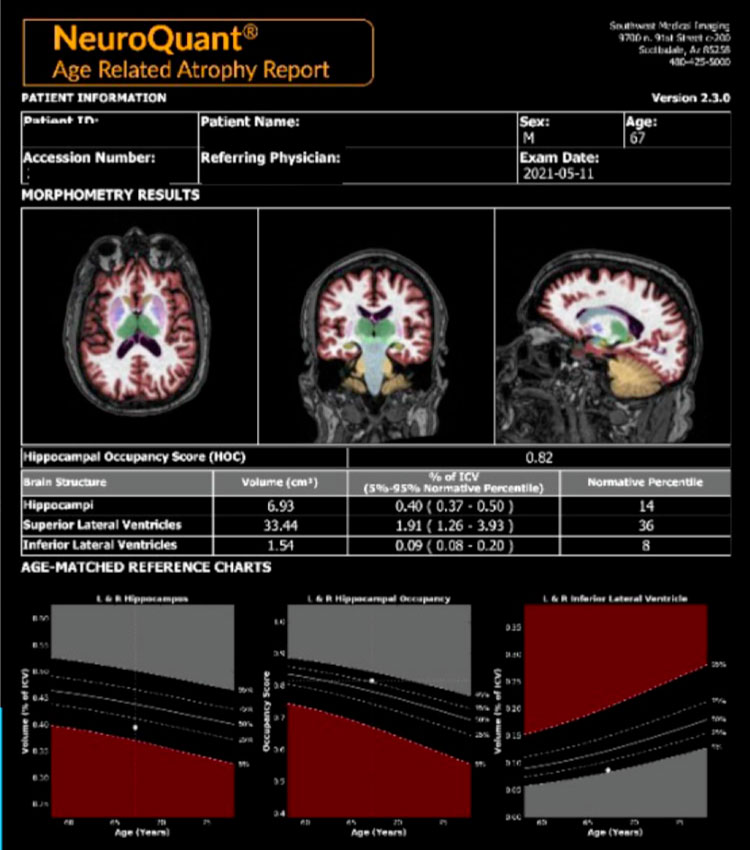NeuroQuant®
NeuroQuant is FDA-approved software that performs volumetric calculations of
brain MRIs and compares them to a database of people of the same age, sex and
cranial volume, with healthy brains. It is an invaluable tool that SMIL radiologists use
because of its reliability and proven track record of quantifying minute differences
across several areas of the brain.
Brain region volume change is a strong indicator of dementia, Alzheimer's disease,
traumatic brain injury (TBI), multiple sclerosis (MS) or epilepsy. For example,
research has shown that the hippocampus of an Alzheimer's patient decreases 5%
per year, compared to 1% per year in a healthy brain. NeuroQuant uses this
information to indicate a likelihood of a current or future diagnosis. It can even
track these changes in the same patient over time to monitor how quickly their
disease is progressing, and may also be used to gauge the effectiveness of a given
treatment regimen.
Sunil Ram, MD, a neuroradiologist at Southwest Medical Imaging (SMIL), says the
ability to quantify localized brain atrophy in patients has been studied for many
years. "Recent advances in automated post-processing empowers us to now apply
that analysis in a routine clinical setting."
"Advantages of ordering a brain MRI with NeuroQuant analysis in a patient with
memory loss can be twofold," Dr. Ram continues. "First, patients with Alzheimer's
disease can be diagnosed sooner and more accurately."
The second advantage is for patients suspected of having Alzheimer's who have a
normal NeuroQuant study result. "Rather than pursuing a diagnosis of Alzheimer's
disease, clinicians can redouble their efforts to search for another source of
memory loss," Dr. Ram says.
Mild cognitive impairment represents a transitional state between normal aging
and dementia. If you are concerned you or a loved one are experiencing symptoms
of early-onset cognitive disorder, a brain MRI can help identify or rule out certain
causes.
